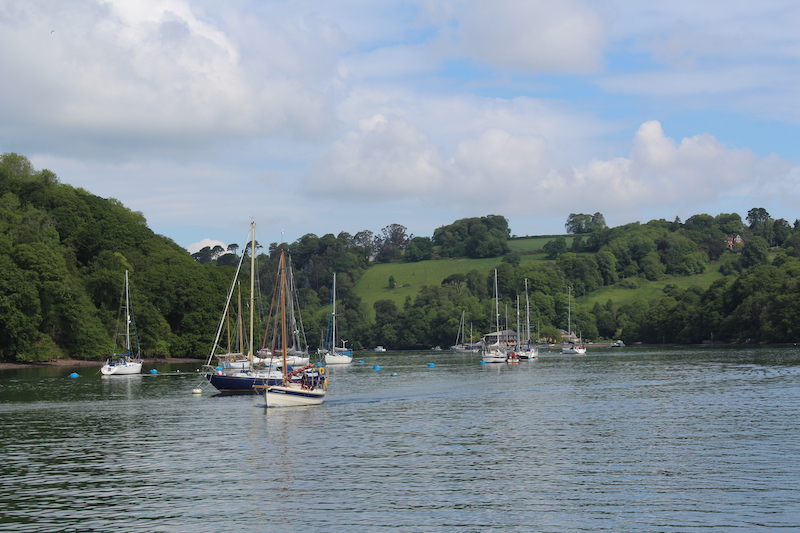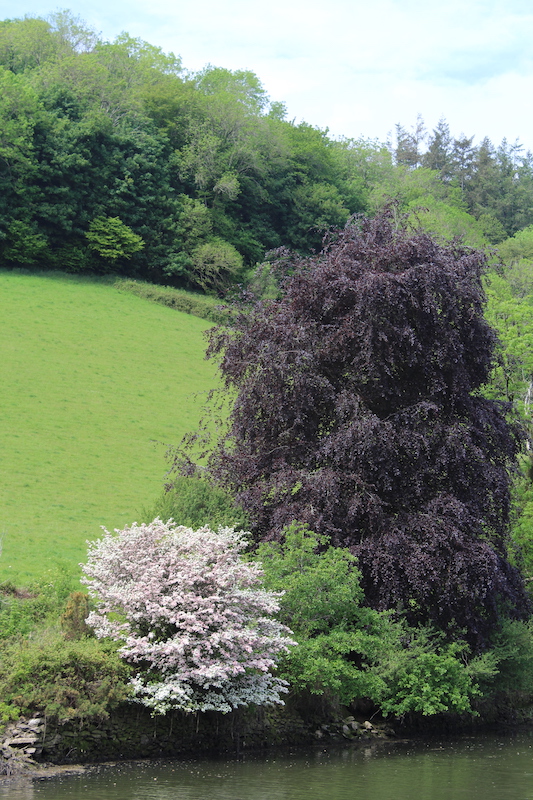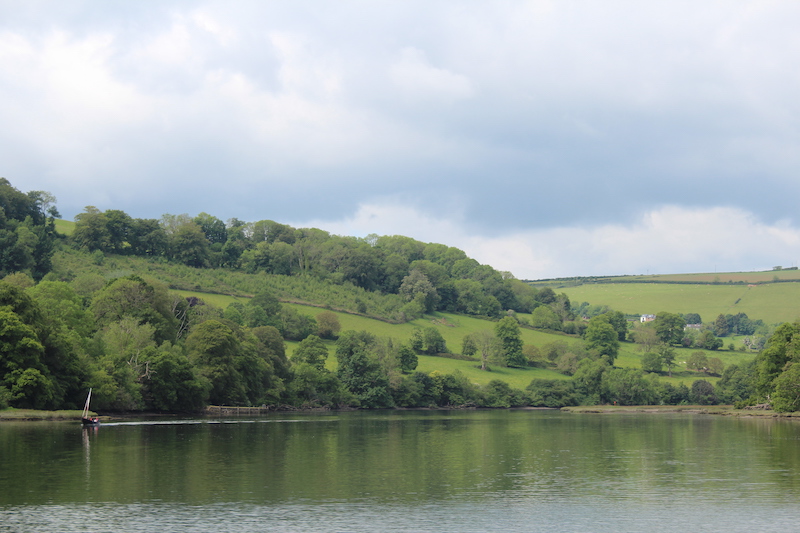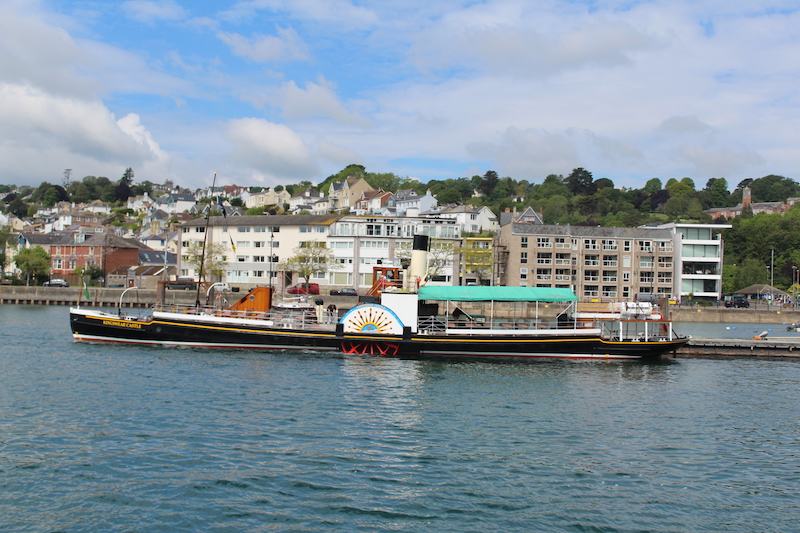Wood and steel sculptures created with a contemporary design combining wood and steel elements to create truly dynamic sculptures.
A “Round Robin” of Dartmouth, Totnes and Paignton
A very British way to spend the day - river ferry from Dartmouth to Totnes, cup of tea and a wander round Totnes, then an open top bus from there to Paignton, followed by a steam train back to Kingswear and finally the harbour ferry back to Dartmouth. What fun chaps - tallyho and all that sort of thing!
The first leg - by river ferry from Dartmouth to Totnes - is a thoroughly pleasant hour and a half chug up the River Dart, regaled by tales of yesteryear provided the Mate (one hopes the Skipper has his eyes on the river!).
Past Sir Walter Raleigh’s boathouse, from which he made what sounds like numerous privateering trips to boost his fortunes; then
the village of Dittisham, which dates back to the Saxon invasion of 660, but is now better known for a couple of pubs (one called the Ferry Boat Inn, but, if you wish to pretend to be a local, you should call the FBI);
on past Greenway House, the holiday home of Agatha Christie but now open to the public through The National Trust;
ever onward past Blackness Rock and Blackness Point, then Pighole Point, Stoke Gabriel, Bow Creek and Tuckenhay, finally past the Sharpham Estate to Totnes.
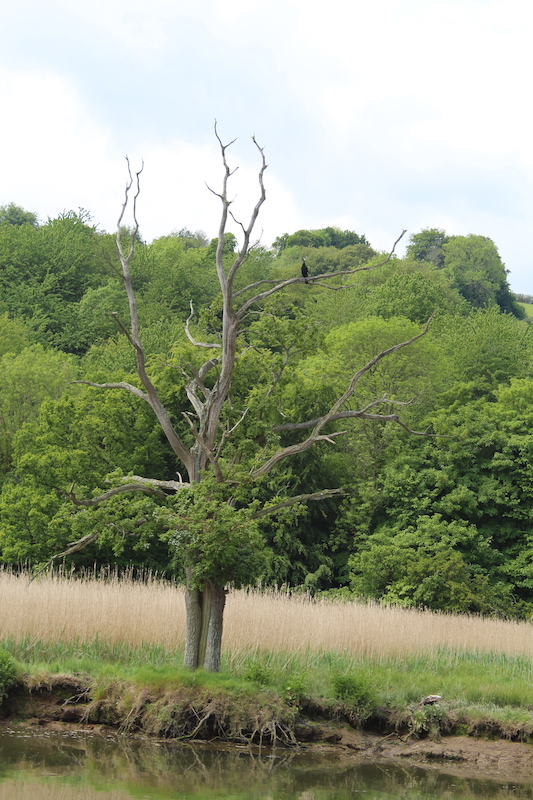
One of the sights along the way is the quaintly named Lightning Tree which has lost much of its foliage, not because the impact of the weather, but simply because of the propensity of cormorants to dry their wings there!
Totnes, or self-styled “Hippie Town”, is so alternative that, reputedly, someone has scrawled across the bottom of the sign on the edge of town “Twinned with Narnia”. My attempts to get a suitably “hippie”style photo to illustrate the town were thwarted when the extravagantly dressed subject (a close relative perhaps of Captain Jack Sparrow) strode rapidly away from me after I declined to pay for the privilege - very alternative!
From Totnes to Paignton involves an open topped bus which doubles as the local bus service, so stops to pick up and drop off along the route. Very pleasant when the weather is good but I imagine it can get a little crowded downstairs when it starts to rain. Perhaps the open topped bus only runs when the forecast is good!
Paignton is the weak link in the chain. Styled as the “start of the English Riviera” or something similar, it is so far from the spirit and style of the real riviera that one is forced to the conclusion that the title must have been dreamt up by a desperate marketing executive running short of time and imagination.
The high street is like an extract from a modern version of Dante’s Inferno - loud, garish, neoned entertainments interspersed with cheap, high calorie fast food outlets of all types, around which the morbidly obese swarm like maggots circling a bloated corpse. The best strategy for Paignton, in my view, is to leave the least possible amount of time between the bus and the departure of the train.
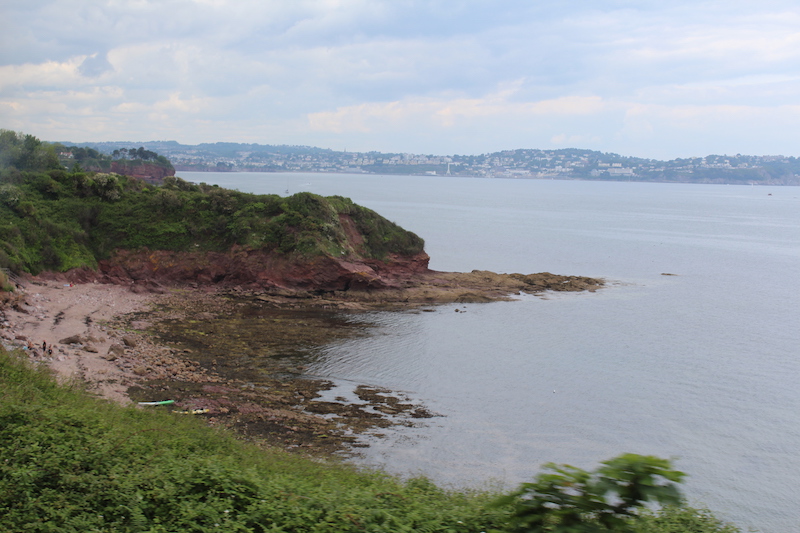
But the steam train back to Dartmouth is as nostalgic and evocative as such trips always are. As soon as the whistle blows, Paignton slips away behind you and the view back across the bay is actually quite pleasant.
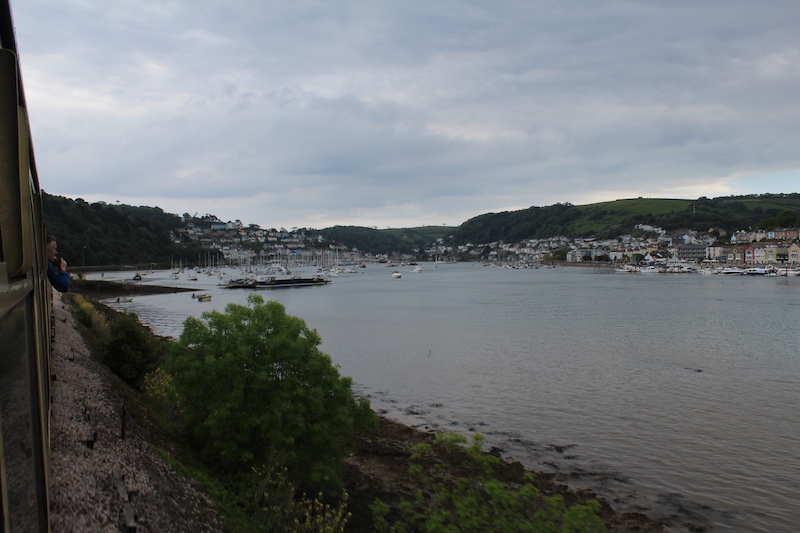
Sitting at the front of the train, just behind the engine, is a wonderful experience as one is surrounded by bobble heads who insist on showing off their knowledge of everything to do with the locomotive, carriages, signalling equipment, on-board PA system - indeed anything technical and train related. Along with the anoraks on the platform writing down the numbers of the carriages and taking pictures of the locomotive’s plate, it was all wonderfully British.
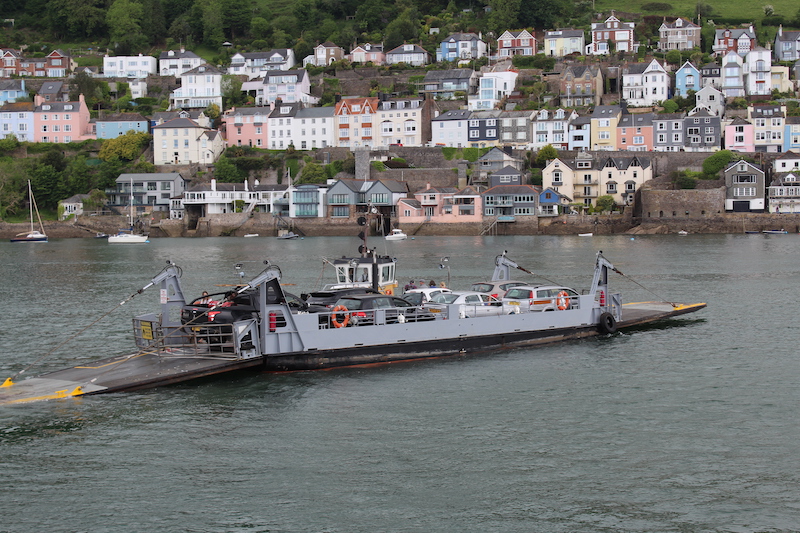
So finally back to Dartmouth on the harbour ferry - not the one in the photo, which is the car ferry, but is much more interesting than the passenger ferry which was, sadly, rather too boringly efficient after the sepia-tinted and delightfully bonkers feel of the rest of the day.
